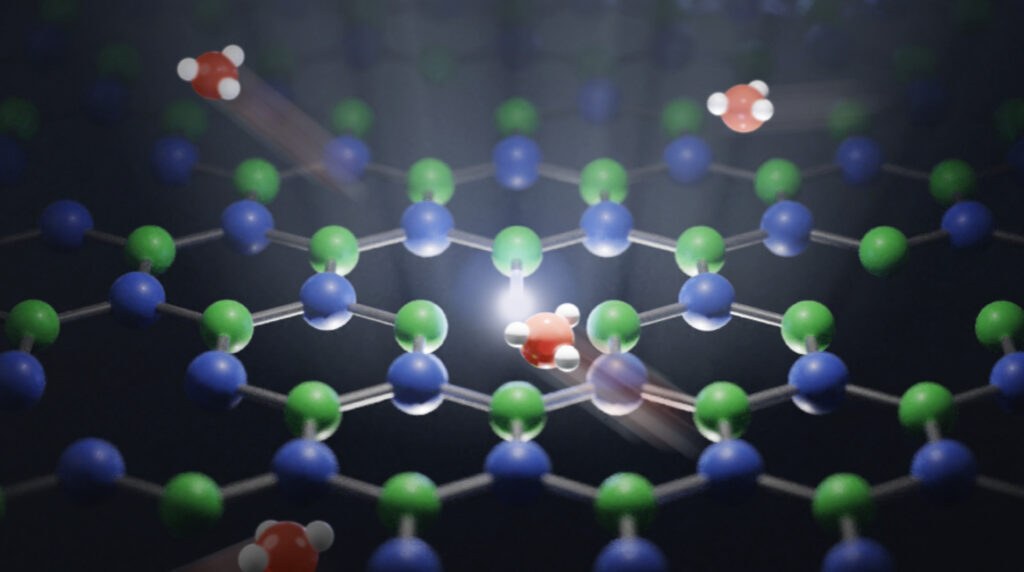Probing solid/electrolyte interfaces
Probing solid/electrolyte interfaces with single-charge nano-fluidics
Charge transport processes at the interface between solid surfaces and liquid electrolytes are at the heart of a number of energy-related applications (blue energy, hydro-voltaic technology, super-capacitors, batteries…). However, the fundamentals governing these interfacial charge transport processes remain poorly understood, due to the strong experimental barriers related to the exploration of these dynamics at the intimate scale of the interface.
The aim of this project is to access to charge transport at solid/liquid interfaces at the ultimate scale of the single charge. Our strategy relies on the application of Single-Molecule Super-Resolution Microscopy techniques to fluorescent defects hosted in hexagonal boron nitride (hBN), a wide-band gap 2D material.
We demonstrated recently that this system can be used to reveal single proton charge diffusion at the hBN/water interface, through the successive activation of ionizable fluorescent surface defects hosted at the surface of the crystal. Here, we will aim at combining these single-molecule microscopy techniques with ionic and fluidic transport measurements in nanofluidic devices. This unique combination will allow us to access to the transport of single proton charges on the solid surface under out-of-equilibrium conditions and correlate it with the ensemble ionic transport in the nanochannel. These measurements at ultimate scales will allow us to gain unprecedented molecular-scale insights on charge transport processes at flowing, electrically driven and confined solid/electrolyte interfaces.


